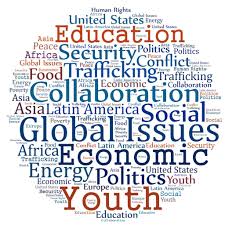Title: Lessons from Bottom-Up Development Approaches in Different Regions
Introduction: In our pursuit of global poverty alleviation and sustainable development, it is crucial to explore effective approaches that empower communities from the grassroots level. Bottom-up development strategies have gained recognition for their ability to drive positive change by prioritizing local knowledge, resources, and participation. This article aims to shed light on the valuable lessons we can learn from various regions around the world, emphasizing the promotion of global poverty alleviation and sustainable development.
-
Understanding the Essence of Bottom-Up Development: Bottom-up development recognizes the potential within communities to shape their own destinies. It encourages active participation, ownership, and decision-making power at the local level.
-
The Power of Local Knowledge: Communities possess invaluable indigenous knowledge that can be harnessed for sustainable development. By incorporating local knowledge into development initiatives, we can foster innovative solutions that address specific challenges faced by communities.
-
Community-Driven Development: Bottom-up approaches prioritize community engagement through participatory decision-making processes. This ensures that the needs and aspirations of the community are genuinely met, leading to sustainable change.
-
Building Capacities and Skills: Empowering individuals within communities by providing them with relevant skills and resources is crucial for sustainable development. This helps create a ripple effect, as empowered individuals become agents of change within their communities.
-
Leveraging Traditional Practices: Traditional practices and cultural values often hold the key to sustainable development. By embracing and integrating these practices, we can foster a sense of pride and ownership within communities, while also preserving cultural heritage.
-
Sustainable Livelihoods: Promoting economic opportunities at the local level is essential for poverty alleviation. Investing in entrepreneurship, vocational training, and microfinance initiatives can empower individuals to uplift themselves and their communities out of poverty.
-
Environmental Stewardship: Bottom-up development approaches emphasize the importance of environmental sustainability. By integrating eco-friendly practices and promoting conservation efforts within communities, we can protect natural resources for future generations.
-
Learning from Success Stories: Examining success stories of bottom-up development from various regions imparts valuable insights. For instance, the Grameen Bank's microcredit initiatives in Bangladesh have empowered millions of women, showcasing the potential for economic transformation.
-
Engaging with NGOs and Civil Society: Collaboration with non-governmental organizations (NGOs) and civil society plays a crucial role in bottom-up development. These entities often possess expertise, networks, and resources that can amplify development efforts and promote long-term sustainability.
-
Government Support and Policies: Governments have a responsibility to create an enabling environment for bottom-up development. This includes implementing favorable policies, providing necessary infrastructure, and ensuring access to essential services.
-
Embracing Technology: Technological advancements, such as mobile banking and digital literacy programs, have proven instrumental in bridging gaps and empowering marginalized communities. Harnessing technology can amplify the impact of bottom-up initiatives.
-
Case Study: Self-Help Groups in India: Self-Help Groups (SHGs) in India have empowered millions of women by providing them with access to microcredit, entrepreneurship training, and social support. These groups have not only improved livelihoods but have also fostered gender equality and social cohesion.
-
Case Study: Farmer Field Schools in Africa: Farmer Field Schools in Africa have promoted sustainable agriculture practices by engaging farmers in experiential learning. By sharing knowledge and implementing eco-friendly techniques, these schools have enhanced food security and reduced poverty levels.
-
Your Role in Promoting Global Poverty Alleviation and Sustainable Development: Each of us has a role to play in promoting global poverty alleviation and sustainable development. By raising awareness, supporting local initiatives, and advocating for policies that prioritize bottom-up approaches, we can contribute to positive change.
-
Conclusion: As we reflect on the lessons learned from bottom-up development approaches in different regions, let us be inspired to develop our own skills and knowledge in promoting global poverty alleviation and sustainable development. By fostering unity, embracing diversity, and empowering communities, we can lay the groundwork for a more equitable and sustainable future.
Are you ready to take action? Share this article to inspire others and join the movement for sustainable development! #GlobalPovertyAlleviation #SustainableDevelopment #Empowerment #CommunityDrivenDevelopment #Inspiration




